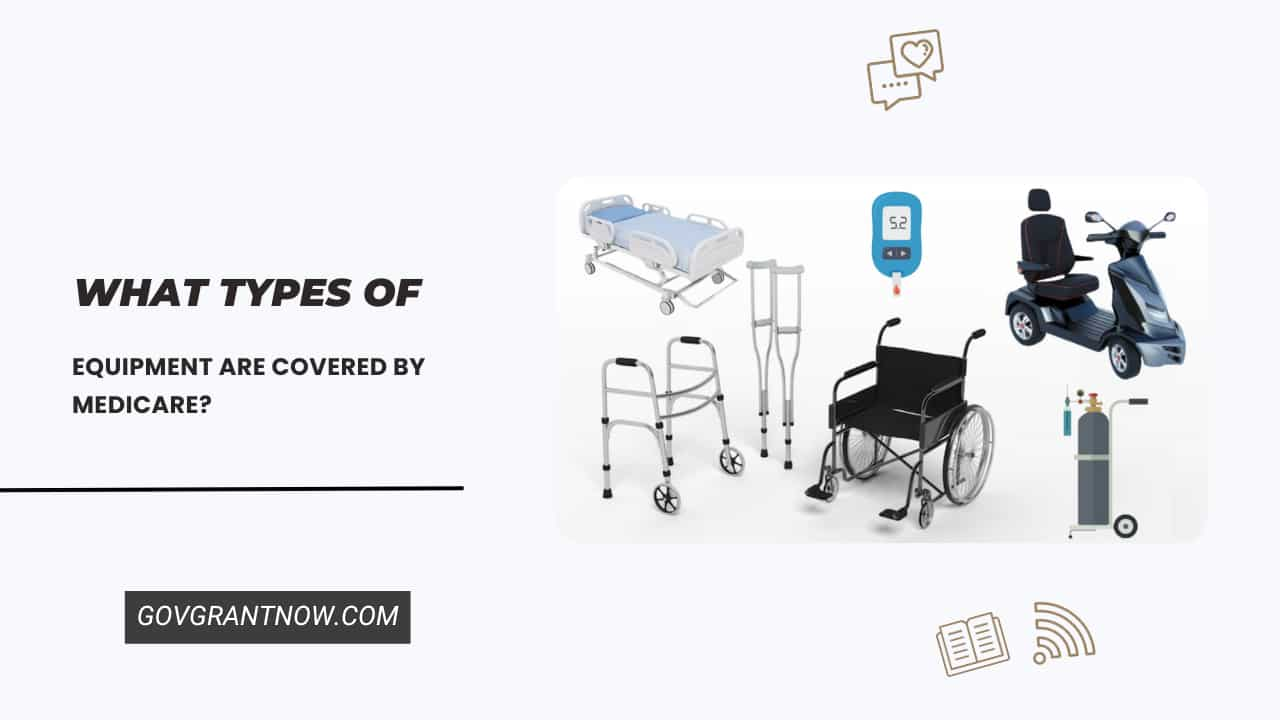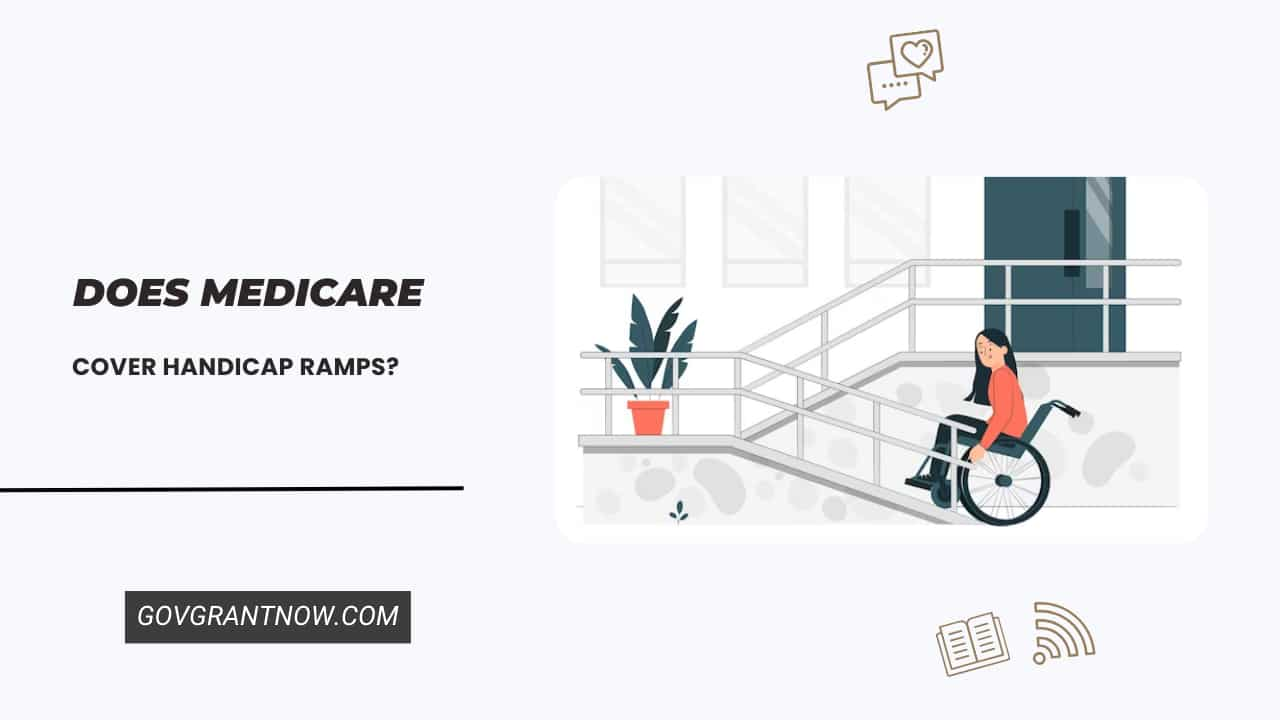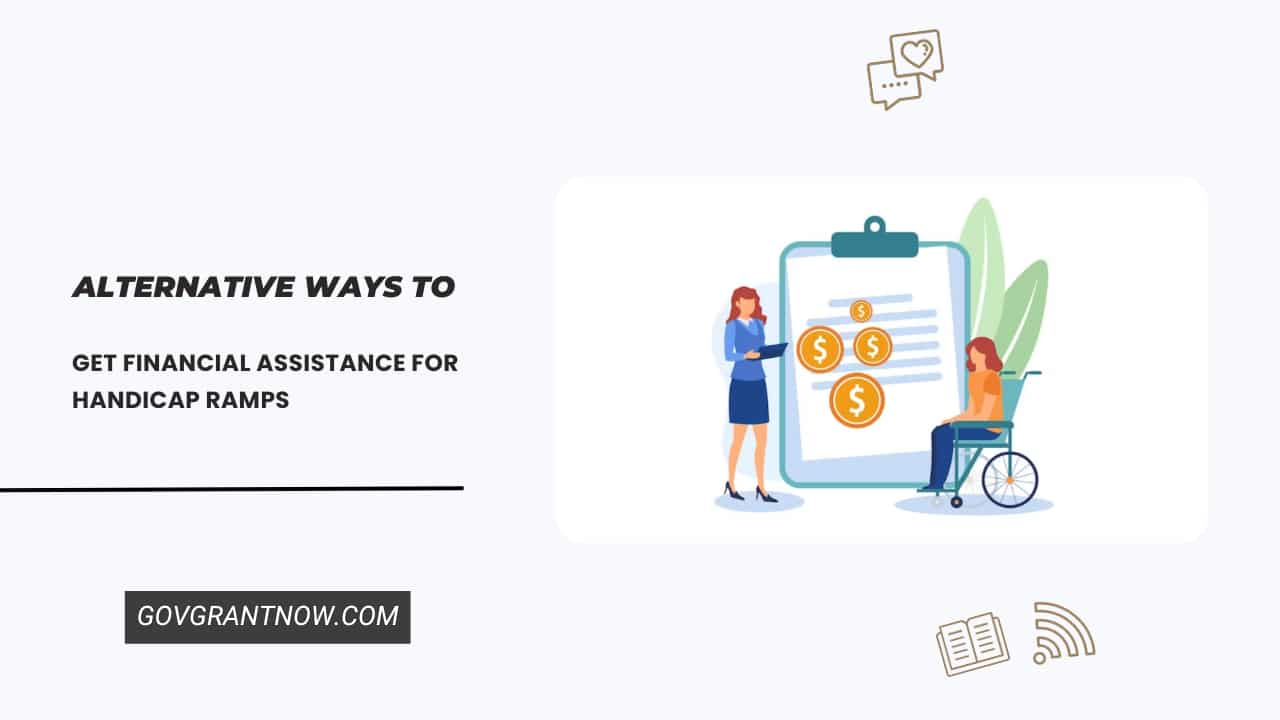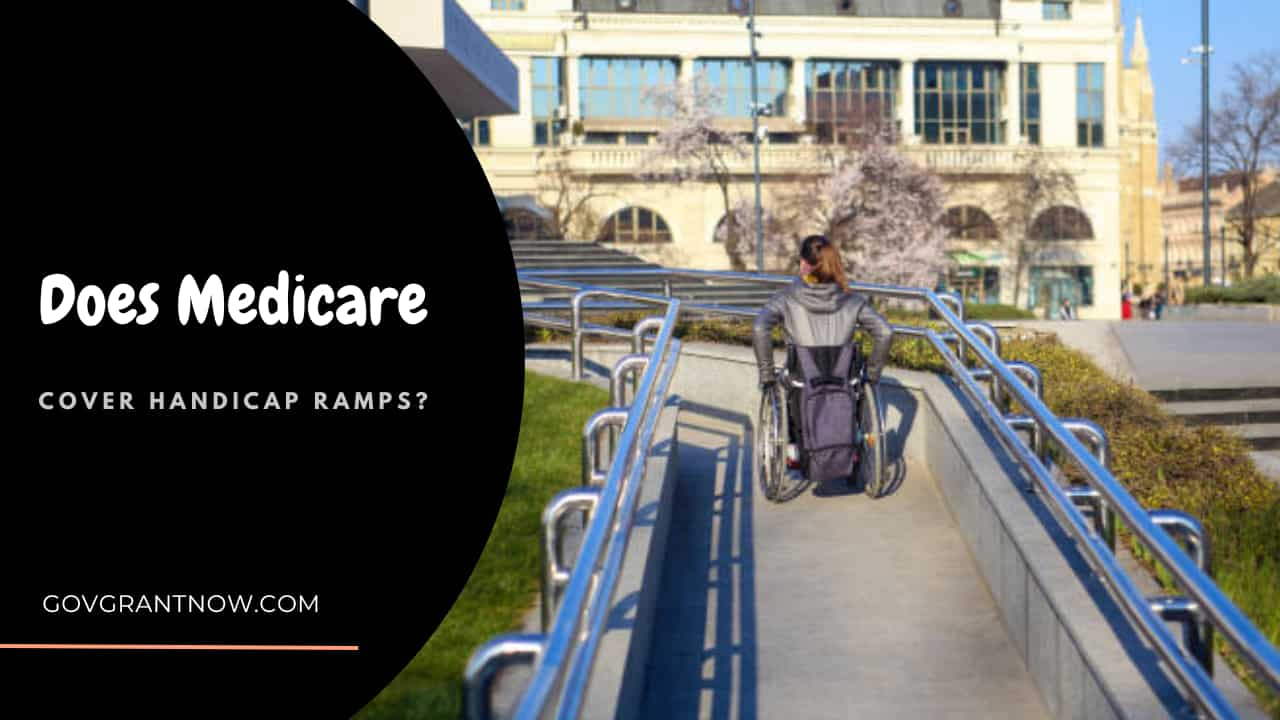When it comes to home accessibility for seniors and disabled individuals, one of the most critical features that is often required is a handicap ramp. As families and caregivers strive to create a safe and accessible living environment, a common question arises: “Does Medicare cover handicap ramps?”
This question is relevant not only to those directly affected but also to healthcare professionals, policymakers, and the elderly and disabled.
In this comprehensive guide, we consider the complexities of Medicare coverage, focusing specifically on its stance on handicap ramps.
Whether you’re a senior citizen, a caregiver, or just exploring future possibilities, this article will guide you through the essentials of understanding Medicare’s role in funding handicap ramps, alternative financing options, and tips for navigating the healthcare system to ensure your home meets your accessibility needs.
Table of Contents
What Types of Equipment Are Covered by Medicare?

Medicare covers a variety of equipment under its Durable Medical Equipment (DME) provision, particularly through Medicare Part B.
This coverage is essential for many beneficiaries who require assistance with their healthcare needs.
Here is a list of the types of equipment commonly covered by Medicare:
- Mobility Aids:
- Wheelchairs (both manual and power) and Scooters: For individuals with mobility issues.
- Walkers: Including standard walkers and rollators.
- Canes: Standard canes, quad canes, etc.
- Home Care Equipment:
- Hospital Beds: Adjustable beds suitable for patients with specific medical needs.
- Patient Lifts: Devices used to transfer a patient from a bed to a chair or other place.
- Commode Chairs: For patients who cannot use a regular toilet.
- Oxygen and Respiratory Equipment:
- Oxygen Equipment: Including oxygen concentrators, tanks, and related supplies.
- Continuous Positive Airway Pressure (CPAP) Devices and Accessories: For sleep apnea treatment.
- Nebulizers and Medication Delivery Systems: For respiratory treatment.
- Prosthetics and Orthotics:
- Prosthetic Devices: Replacements for a missing body part, such as a limb.
- Orthotic Devices: Braces for the neck, back, arms, and legs.
- Diabetes Supplies:
- Blood Sugar Monitors: Including glucometers.
- Test Strips and Lancets: For daily blood sugar testing.
- Insulin Pumps: For continuous insulin delivery.
- Other Medical Equipment:
- Traction Equipment: For certain spinal conditions.
- Pressure-reducing Support Surfaces: Like Certain mattresses and overlays for patients susceptible to bed sores.
- Infusion Pumps and Supplies: For home infusion therapy.
- Telehealth Devices:
- In some cases, Medicare may cover telehealth equipment used for remote monitoring and consultations.
Does Medicare Cover Handicap Ramps?

Medicare Part B is designed to cover a range of medical services and supplies, including Durable Medical Equipment (DME), which is essential for many beneficiaries in managing their health conditions.
DME typically encompasses items like wheelchairs, walkers, and hospital beds that are prescribed for home use. However, the coverage of handicap ramps under Medicare Part B is a more complex issue.
Handicap ramps critical to improving accessibility for people with mobility challenges, are generally not covered under Medicare Part B.
This is mainly because they are considered home modifications rather than medical equipment.
Medicare Part B focuses on devices that are directly related to a person’s medical needs and can be used in their home.
Handicap ramps are viewed as structural modifications to the home rather than a direct medical necessity, falling outside the general scope of DME coverage.
There are other avenues beneficiaries can explore for assistance with handicap ramps. For example, Medicare Advantage plans often offer additional benefits that may include coverage for home modifications such as Medicare wheelchair ramp.
These plans are offered by private insurance companies and may offer a wider range of coverage than traditional Medicare Parts A and B.
Medicare Advantage Plans for Handicap Ramps
Medicare Advantage plans, also known as Part C, provide an alternative to Original Medicare (Parts A and B) and are offered by private insurance companies.
These plans often include additional benefits not covered under Original Medicare, which may sometimes include coverage for home modifications such as handicap ramps.
Medicare Advantage plans have the flexibility to offer a wide range of benefits, including allowances for handicap ramps.
However, coverage for such changes varies considerably among different plans. Some Medicare Advantage plans may cover handicap ramps if they are deemed medically necessary and prescribed by a healthcare provider.
It is important for beneficiaries to carefully review their plan benefits or contact their plan provider to understand specific coverage related to home modifications.
To determine whether a Medicare Advantage plan covers handicap ramps, beneficiaries should check the plan’s Evidence of Coverage (EOC) and Summary of Benefits documents.
These documents provide detailed information on what the plan covers. If the information is not clear, or if there are specific questions about the coverage of handicap ramps, you should contact the plan provider directly.
Alternative Ways to Get Financial Assistance for Handicap Ramps

When seeking funding for handicap ramps, it is important to consider alternatives other than Medicare, as coverage in this area may be limited.
There are numerous resources and programs available that can provide financial assistance for these essential home modifications.
Here are some alternative ways to get financial assistance for handicap ramps:
1. Medicaid Home and Community-Based Services (HCBS)
Medicaid offers Home and Community-Based Services (HCBS) programs that are especially beneficial for individuals with disabilities.
These programs are designed to help people live independently in their communities. One of the key features of HCBS is potential coverage for home modifications, including the installation of handicap ramps.
Eligibility criteria and coverage limits may vary by state, so it is important to contact the local Medicaid office for specific information and application procedures.
2. Non-Profit Organizations
Numerous non-profit organizations are dedicated to helping individuals with disabilities. Many of these organizations provide funding or other types of assistance for home modifications such as handicap ramps.
It is worth researching both local and national non-profit organizations that support this area.
They can be a valuable resource not only for financial assistance but also for advice and guidance on the best solutions for individual needs.
Here are some non-profit organizations that can help with handicap ramps:
- Rebuilding Together
- Habitat for Humanity
- The National Council on Independent Living (NCIL)
- The National Resource Center on Supportive Housing and Home Modification
- Local Area Agencies on Aging (AAA)
- Veterans Administration (VA) (Only for veterans)
- Local Rotary Clubs or Lions Clubs
- Local Churches and Faith-Based Organizations
- Center for Independent Living
3. State or Local Government Programs
Many states have programs specifically aimed at helping seniors and people with disabilities make their homes more accessible.
Additionally, city or county governments may also offer grants, loans, or other assistance programs designed for home modifications.
These programs often have specific eligibility criteria and application processes, so reaching out to state or local government offices for more information is a good starting point.
4. Community Grants and Vocational Rehabilitation Programs
Local community organizations and foundations sometimes offer grants for individuals in need of home modifications.
These grants can be especially useful for funding handicap ramps. Exploring options available through community centers, local chapters of national organizations, or area councils on aging can provide valuable resources.
For those who are employed or seeking employment, state vocational rehabilitation agencies can assist.
These agencies sometimes provide funding for home modifications that are necessary for employment purposes, including accessibility improvements such as ramps.
5. Crowdfunding and Personal Fundraising
In the digital age, crowdfunding platforms like GoFundMe have become popular ways to raise money for a variety of causes, including personal needs like home improvements. Additionally, organizing local fundraising events or reaching out to personal networks can also be effective in raising needed funds.
Conclusion:
This article provides complete information on whether wheelchair ramps are covered by Medicare. Medicare beneficiaries need to know that Medicare Part B generally does not cover handicap ramps, as they are classified as home modifications rather than medical equipment. However, coverage under Medicare Advantage plans (Part C) is likely, but coverage is not guaranteed.
Additionally, there are alternative funding options for those needing handicap ramps, including Medicaid Home and Community-Based Services (HCBS), assistance from non-profit organizations like Rebuilding Together and Habitat for Humanity, state or local government programs, community grants, vocational rehabilitation programs, and crowdfunding or personal fundraising efforts. These alternatives provide viable options for individuals seeking financial assistance for handicap ramps outside of Medicare coverage.
Frequently Asked Questions:
Does Medicare Cover Wheelchair Ramps?
No, Medicare generally does not cover wheelchair ramps because they are considered home modifications, not medical equipment. However there are some alternative ways to get financial assistance for wheelchair ramps, including Medicaid home and community-based services, nonprofit organizations like Habitat for Humanity, state and local government programs, community grants, and individual fundraising efforts like crowdfunding.
Can Medicare Advantage Plans Cover the Cost of Handicap Ramps?
Yes, some Medicare Advantage (Part C) plans may cover handicap ramps if deemed medically necessary. Coverage varies among plans, so it’s important to check specific plan details.
What Are Alternative Funding Sources for Handicap Ramps Apart from Medicare?
Alternative funding can be sourced from Medicaid Home and Community-Based Services, non-profit organizations (like Habitat for Humanity), state or local government programs, community grants, vocational rehabilitation programs, and personal fundraising methods such as crowdfunding.
Does Blue Cross Blue Shield Cover Wheelchair Ramps?
Blue Cross Blue Shield’s coverage for wheelchair ramps depends on the specific policy and plan. Some plans, especially those under Medicare Advantage, might offer coverage for home modifications like wheelchair ramps.
